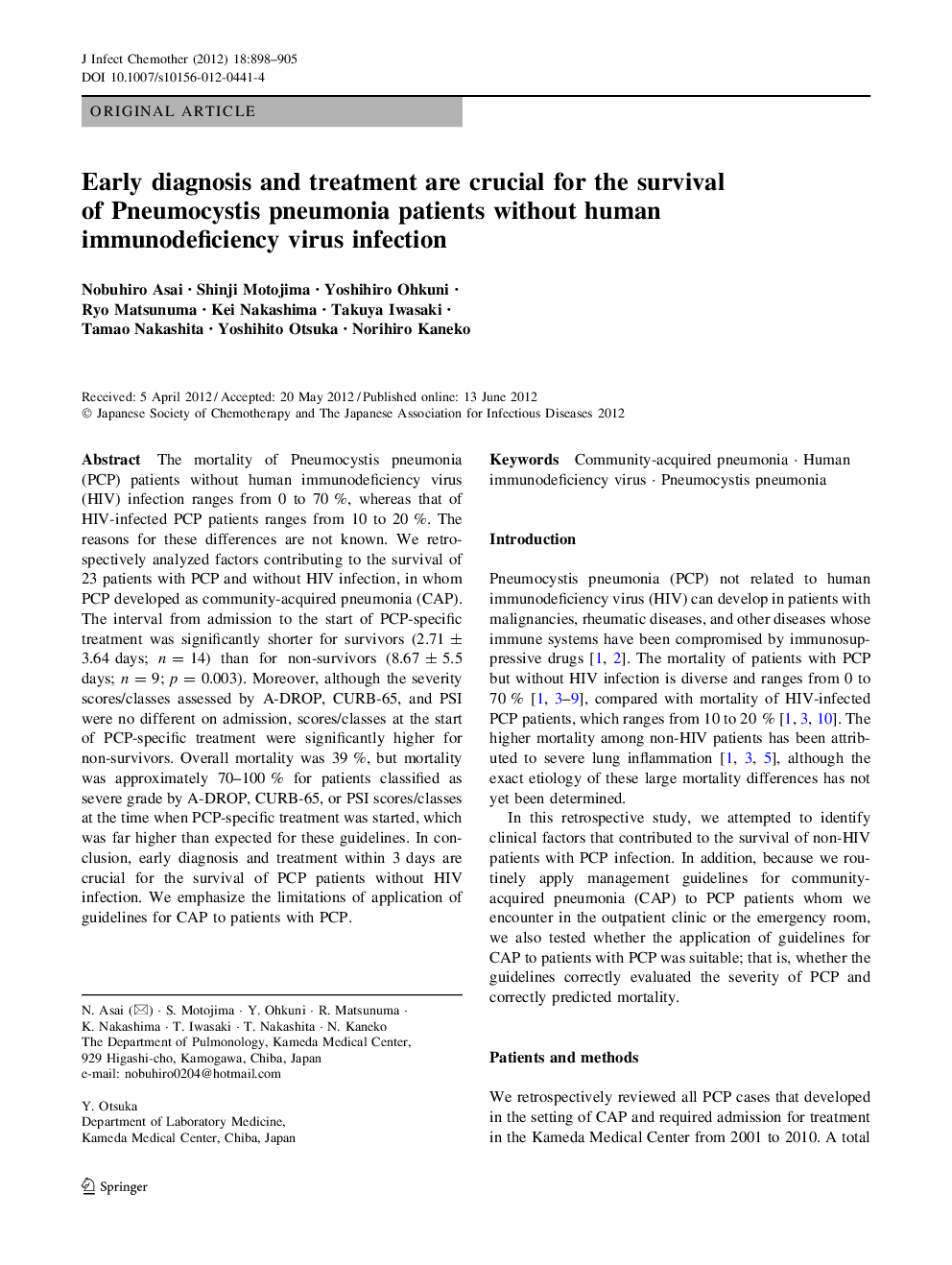| Article ID | Journal | Published Year | Pages | File Type |
|---|---|---|---|---|
| 6124012 | Journal of Infection and Chemotherapy | 2012 | 8 Pages |
Abstract
The mortality of Pneumocystis pneumonia (PCP) patients without human immunodeficiency virus (HIV) infection ranges from 0 to 70 %, whereas that of HIV-infected PCP patients ranges from 10 to 20 %. The reasons for these differences are not known. We retrospectively analyzed factors contributing to the survival of 23 patients with PCP and without HIV infection, in whom PCP developed as community-acquired pneumonia (CAP). The interval from admission to the start of PCP-specific treatment was significantly shorter for survivors (2.71 ± 3.64 days; n = 14) than for non-survivors (8.67 ± 5.5 days; n = 9; p = 0.003). Moreover, although the severity scores/classes assessed by A-DROP, CURB-65, and PSI were no different on admission, scores/classes at the start of PCP-specific treatment were significantly higher for non-survivors. Overall mortality was 39 %, but mortality was approximately 70-100 % for patients classified as severe grade by A-DROP, CURB-65, or PSI scores/classes at the time when PCP-specific treatment was started, which was far higher than expected for these guidelines. In conclusion, early diagnosis and treatment within 3 days are crucial for the survival of PCP patients without HIV infection. We emphasize the limitations of application of guidelines for CAP to patients with PCP.
Related Topics
Life Sciences
Immunology and Microbiology
Applied Microbiology and Biotechnology
Authors
Nobuhiro Asai, Shinji Motojima, Yoshihiro Ohkuni, Ryo Matsunuma, Kei Nakashima, Takuya Iwasaki, Tamao Nakashita, Norihiro Kaneko, Yoshihito Otsuka,
